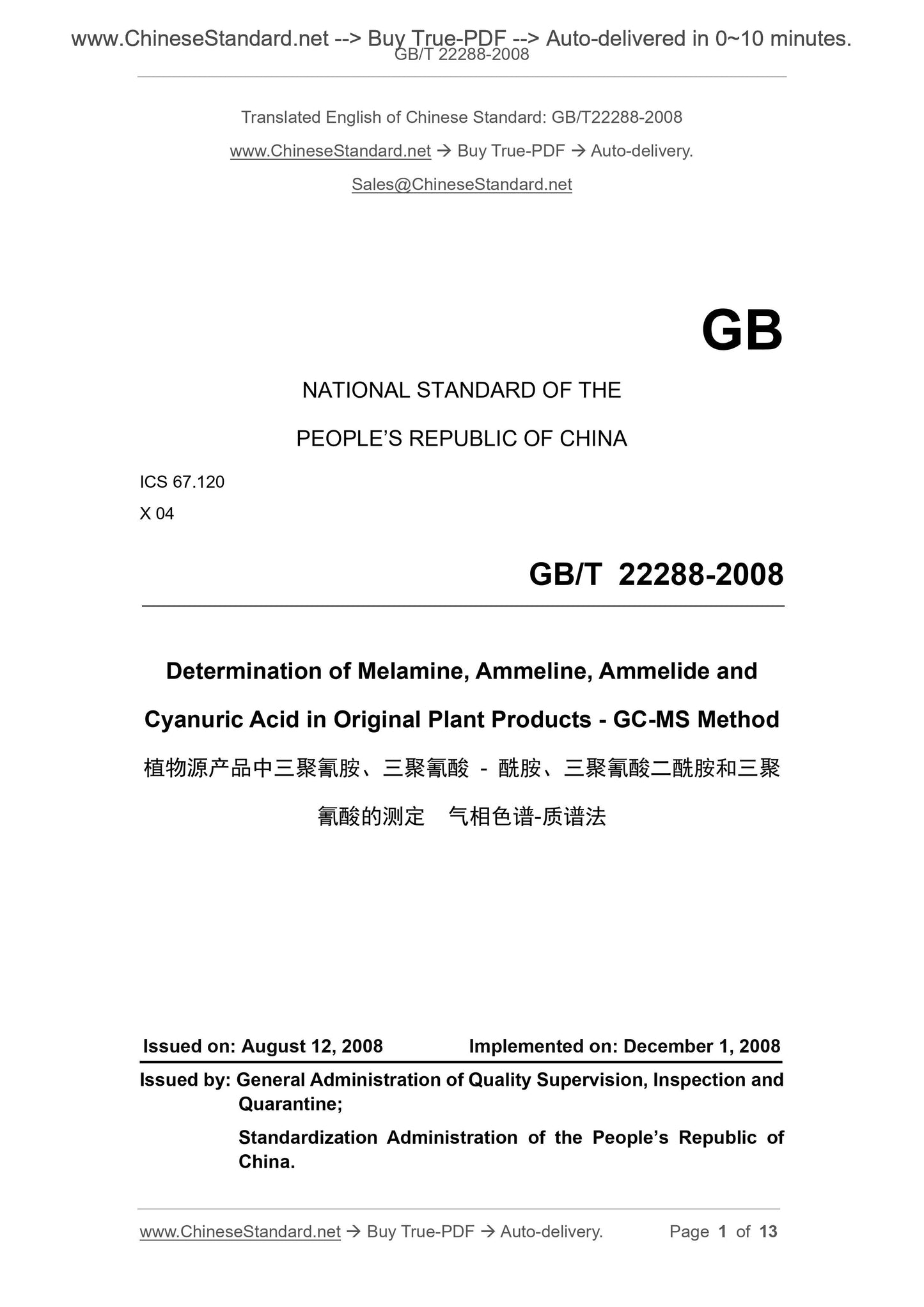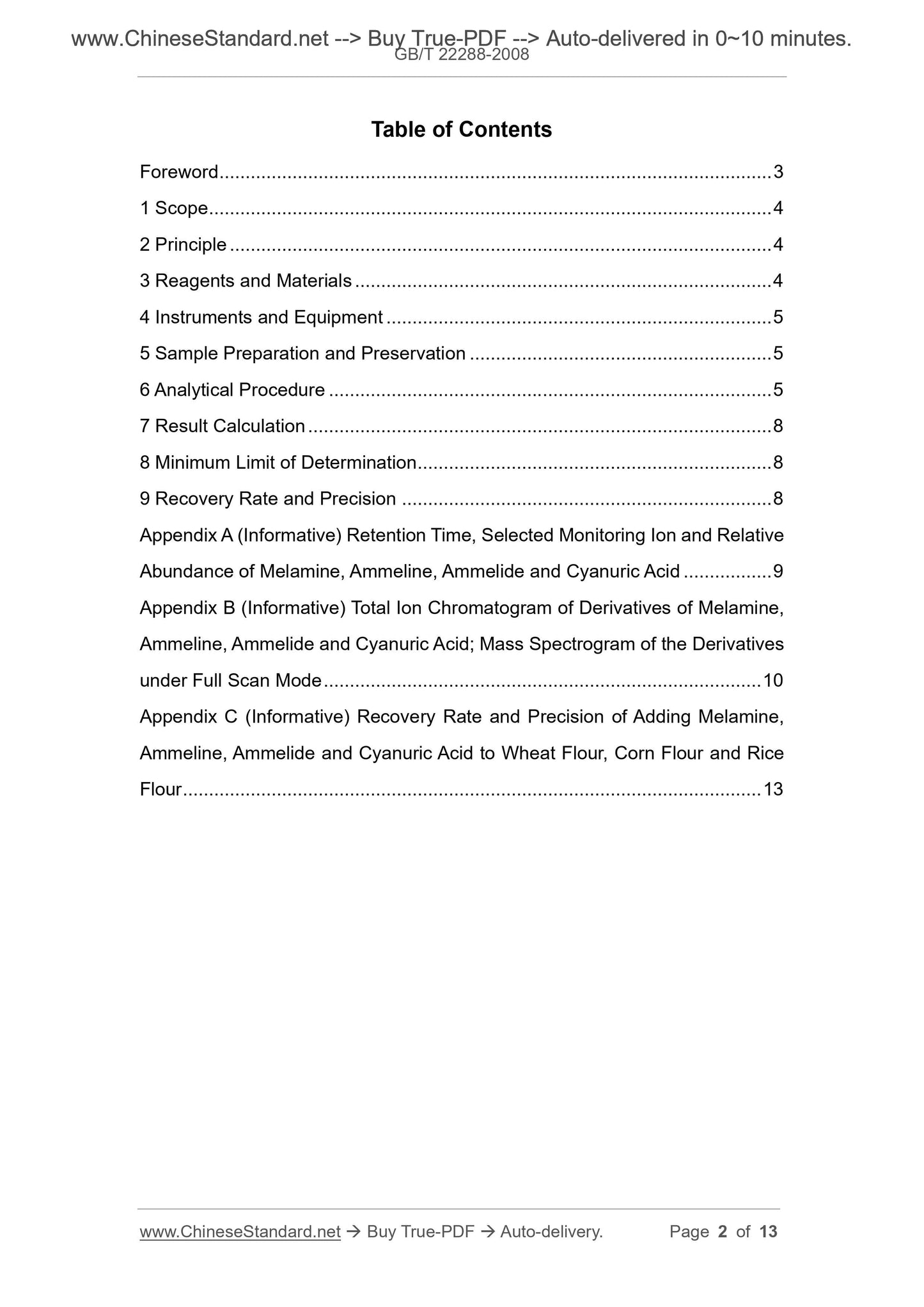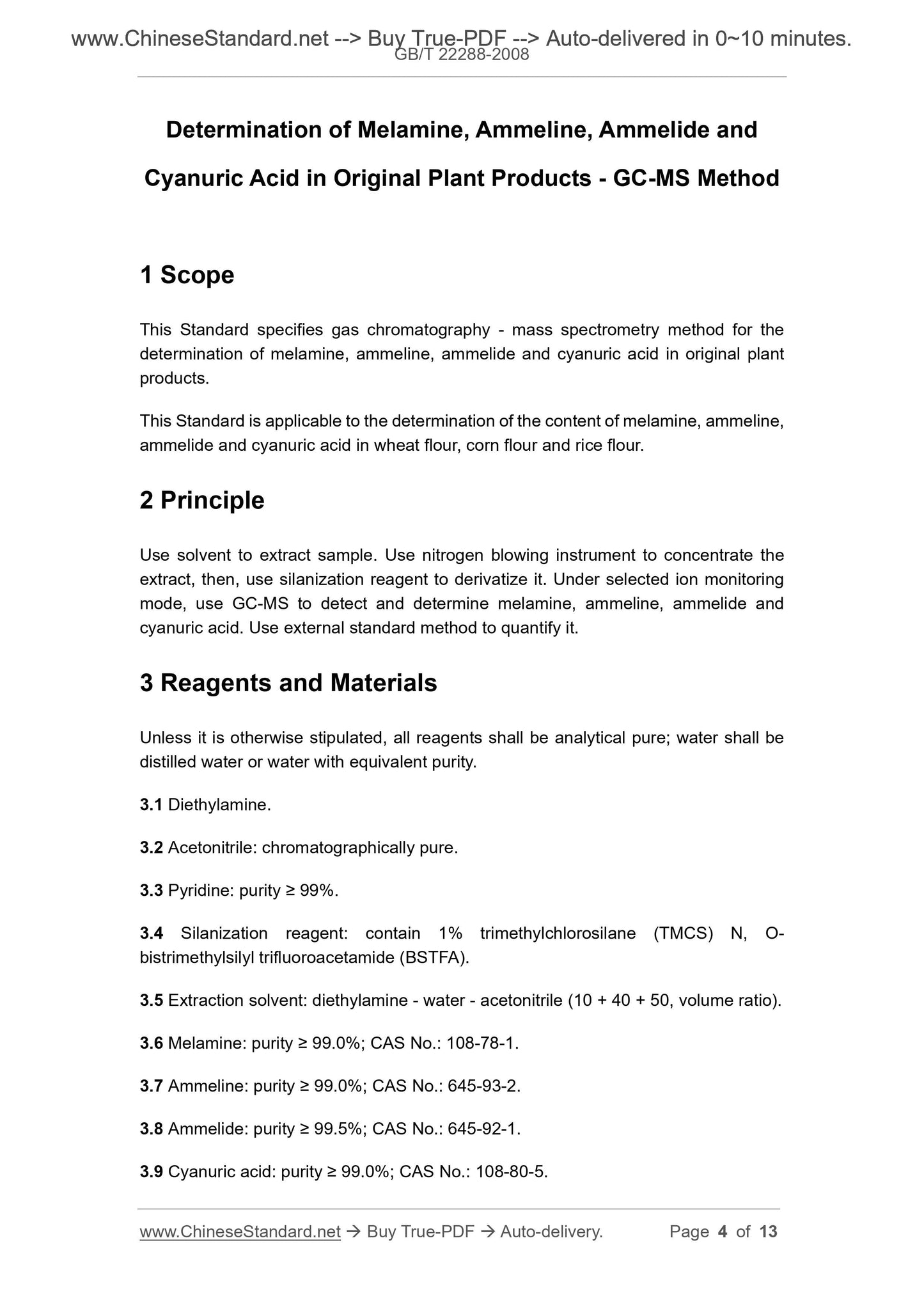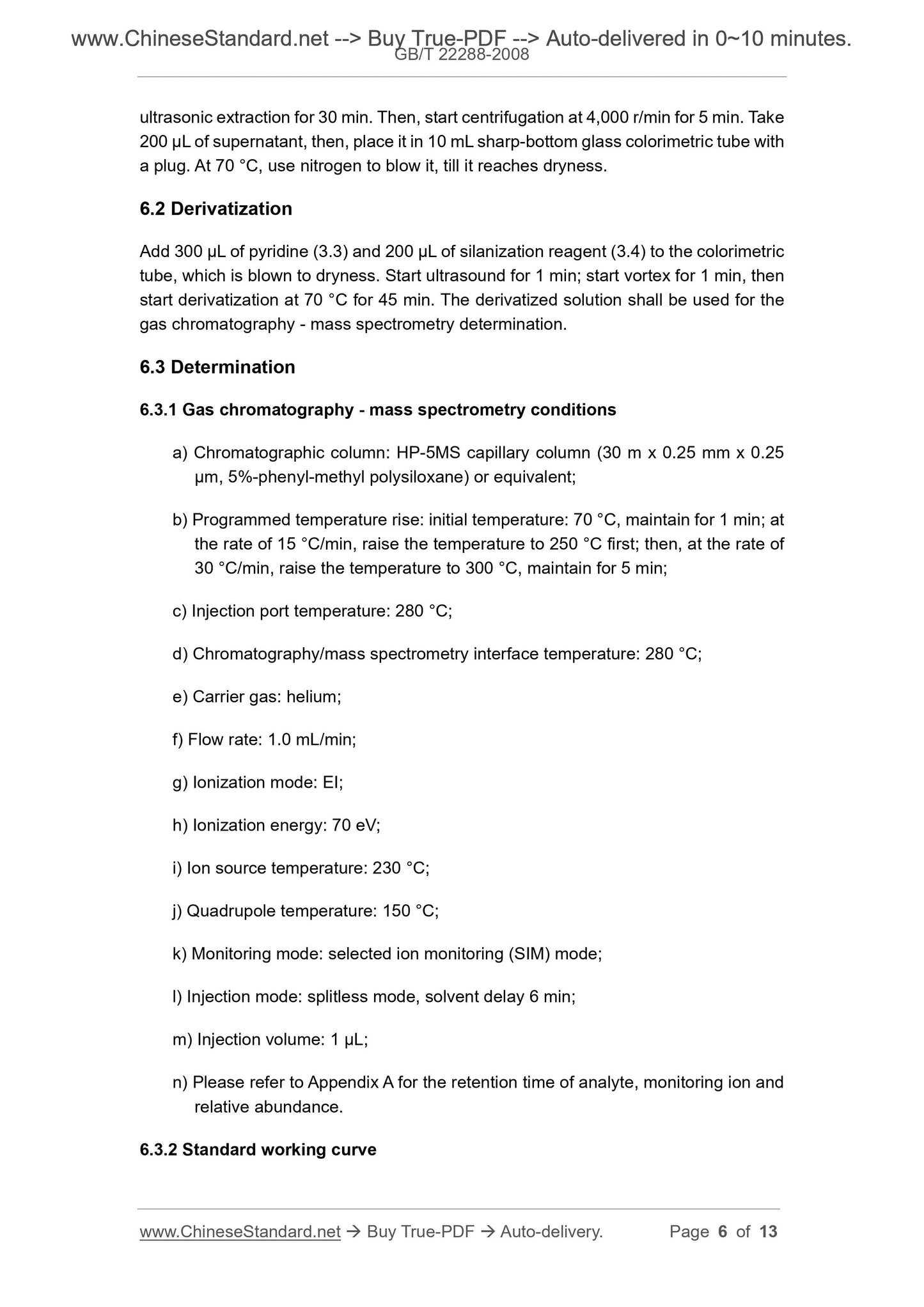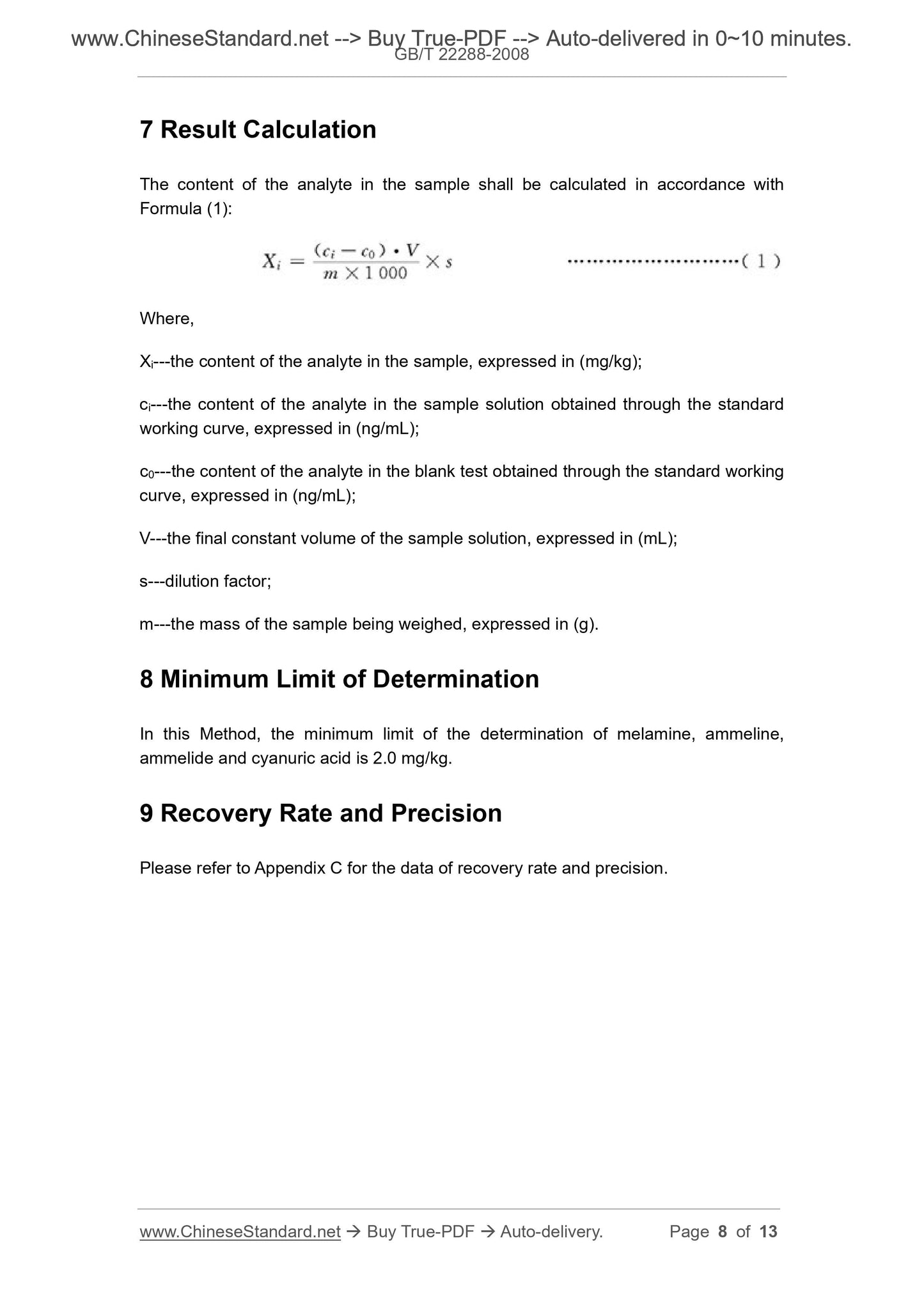1
/
of
5
www.ChineseStandard.us -- Field Test Asia Pte. Ltd.
GB/T 22288-2008 English PDF (GB/T22288-2008)
GB/T 22288-2008 English PDF (GB/T22288-2008)
Regular price
$125.00
Regular price
Sale price
$125.00
Unit price
/
per
Shipping calculated at checkout.
Couldn't load pickup availability
GB/T 22288-2008: Determination of Melamine, Ammeline, Ammelide and Cyanuric Acid in Original Plant Products - GC-MS Method
Delivery: 9 seconds. Download (and Email) true-PDF + Invoice.Get Quotation: Click GB/T 22288-2008 (Self-service in 1-minute)
Newer / historical versions: GB/T 22288-2008
Preview True-PDF
Scope
This Standard specifies gas chromatography - mass spectrometry method for thedetermination of melamine, ammeline, ammelide and cyanuric acid in original plant
products.
This Standard is applicable to the determination of the content of melamine, ammeline,
ammelide and cyanuric acid in wheat flour, corn flour and rice flour.
Basic Data
| Standard ID | GB/T 22288-2008 (GB/T22288-2008) |
| Description (Translated English) | Determination of Melamine, Ammeline, Ammelide and Cyanuric Acid in Original Plant Products - GC-MS Method |
| Sector / Industry | National Standard (Recommended) |
| Classification of Chinese Standard | X04 |
| Classification of International Standard | 67.120 |
| Word Count Estimation | 11,152 |
| Date of Issue | 2008-08-12 |
| Date of Implementation | 2008-12-01 |
| Regulation (derived from) | National Standard Approval Announcement 2008 No.12 (Total No.125) |
| Issuing agency(ies) | General Administration of Quality Supervision, Inspection and Quarantine of the People's Republic of China, Standardization Administration of the People's Republic of China |
| Summary | This standard specifies the melamine products of plant origin, three ammelide, three ammeline and cyanuric acid was measured by gas chromatography/mass spectrometry methods. This standard applies to wheat flour, corn flour, melamine rice flour, Three ammelide, determination of cyanuric acid and cyanuric acid diamide content. |
Share
